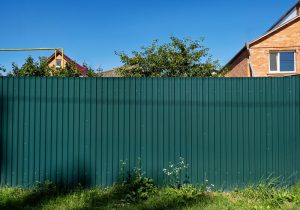How to Identify and Address Mold in Your Home

It is easy to overlook the problem of mold in the home until it becomes a glaring issue. Timely identification and remediation help avert health risks.
In this article, we will guide you through identifying mold, determining the extent of mold infestation using mold testing services, and knowing when to call in a professional.
Signs and Symptoms of Mold Exposure
Mold Exposure Symptoms
Several distinct symptoms can indicate mold exposure. People sensitive to mold might develop congestion, experience wheezing, or show red or puffy eyes. In some cases, mold exposure symptoms can be mistaken for common allergies. It’s important to track the source of these symptoms and rule out the possibility of mold.
Identifying Visible and Hidden Mold in the Home
Knowing to look for certain signs can help you identify the presence of mold. Visible and hidden mold often presents itself in different forms. Odd smells, discoloration on walls, furniture, or ceilings, and recent water leakage and mold growth can all be potential signs of a mold infestation.
Testing for Mold in the Home
DIY Mold Testing Versus Professional Mold Inspection
Upon identifying potential sources of mold, the next step involves measuring the extent of the problem. Homeowners can use cost-effective DIY mold testing kits for small, visible areas. However, professional mold inspection is recommended for extensive and hidden mold. Mold inspection and remediation companies provide comprehensive services, often including mold air tests to measure spore concentration in indoor air.
Surface and Air Sampling for Mold
Professional services rely on surface and air sampling for mold. These tests capture and analyze airborne mold spores to identify potential infections. Understanding this process can help homeowners decide to hire testing services when needed.
Mold Inspection Cost
Can you get a mold inspection for free? What does an average mold inspection cost? These questions often trouble homeowners seeking professional help. Typically, mold inspection costs can range between $300 to $500, with additional charges for testing and remediation.
Maintaining a Mold-Free Environment in Your Home
A common challenge in maintaining a home is managing potential mold infestations. Properly warding off mold largely revolves around controlling the home environment, particularly the moisture and air quality. Here are some crucial strategies and tools for maintaining a mold-free home.
How to Prevent Mold in the Home
Mold tends to thrive in high-humidity areas. Homes with a moisture issue are likely to experience mold growth. Employing the following techniques can help in mold prevention:
- Understand the Role of Humidity: The first step is recognizing the fundamental relationship between mold and moisture. Both visible, like leaks or dampness, and hidden moisture, like high humidity, will likely invite mold.
- Use of Hygrometers: A practical step in managing humidity is regular monitoring. A hygrometer is a device to measure the moisture content in the atmosphere. Keeping track of indoor humidity helps in early mold detection.
- Regulate Humidity Levels: Once an issue is identified, you must manage it. Homeowners can use dehumidifiers or air conditioners to regulate humidity, ideally around or below 50 percent.
- Address Wet and Damp Areas: Look for any spaces within the home that are persistently damp. This could be due to leaks, seepage, or condensation. These wet areas need to be addressed promptly to prevent mold growth.
Air Purifiers and Mold
Air quality plays another significant role in home mold-hosting conditions. Here’s how air purifiers can be used to combat mold:
- Airborne Mold Spores: Mold doesn’t just stay bound to a damp wall; it releases spores, which are tiny particles, into the air. These airborne mold spores can land on various home surfaces and start new mold colonies.
- Suction of Airborne Spores: While they don’t eliminate mold on surfaces, air purifiers can help reduce the spread of mold spores in the indoor air, thus curbing the proliferation of mold.
- Use of HEPA filters: An air purifier with a HEPA filter is the best bet for capturing mold particles. These filters are designed to capture tiny particles, including mold spores, and are thus very effective in improving air quality and reducing potential mold growth spaces.
Addressing Mold and Property Damage
Fire Damage Restoration
After a fire, homeowners may need to address more than just soot and broken structures. In many cases, mold can be an unwelcome visitor. Remediation solutions like fire restoration services in St. Augustine involve checking and treating mold apart from general restoration tasks.
Property Damage Restoration
Damage restoration involves more than repair. For example, when dealing with severe water damage from a flood, you can find disaster cleanup services in St. Augustine to minimize long-term damage, such as mold growth.
Landlord and Tenant Responsibilities in Mold Treatment
When it comes to rental properties, addressing mold can become complicated. Who is in charge of treating mold in rental properties? The landlord or the tenant? Understanding the landlord and tenant’s responsibilities in mold treatment can ensure swift resolution and minimum health risks.
Conclusion
Discovering and addressing a mold issue in your home doesn’t have to be daunting. By knowing to look for signs of mold, correctly testing for mold in the home, using air purifiers, controlling humidity, and understanding the need for professional mold inspection for large areas, you can efficiently deal with any mold problem.
Remember, the importance of swift action in treating mold cannot be understated for the health and safety of all occupants.


